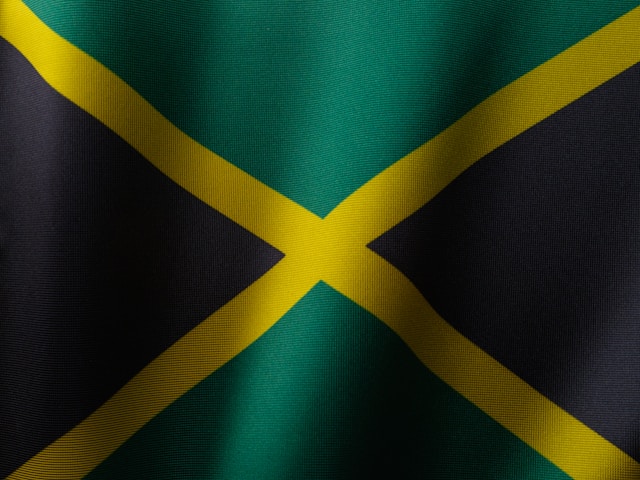The Jamaican flag was first officially raised on August 6, 1962, the day Jamaica gained independence from British colonial rule. It holds a deep symbolic meaning and reflects the resilience, optimism, and natural beauty of the Jamaican people and nation.
Design and Colors
The Jamaican flag is unique in its design, featuring a diagonal cross (saltire) that divides the flag into four sections:
- The gold cross symbolizes the sunshine and wealth of the country.
- The black sections represent the strength and resilience of the Jamaican people in overcoming hardships.
- The green sections signify the country’s lush vegetation and agricultural resources.
The design was selected through a national competition leading up to independence, with input from the public. Initially, a horizontal tricolor design was proposed but was considered too similar to other nations’ flags. The current design, with the distinctive saltire, was finalized to create a unique identity.
Motto and Meaning
The colors of the flag align with Jamaica’s national motto, “Out of Many, One People,” symbolizing unity despite diverse backgrounds. Additionally, the symbolism of the colors is often expressed as:
- “Hardships there are, but the land is green and the sun shineth.”
Evolution and Usage
The Jamaican flag has remained unchanged since its adoption, making it one of the most recognizable and enduring national symbols. It is used during celebrations of independence, sports events, and international showcases, often seen as a vibrant emblem of Jamaican pride and identity.
The Jamaican flag is the only national flag in the world that does not contain red, white, or blue, making it uniquely distinctive among flags globally.
Further Reading
- 40 Facts About Jamaica: For Kids, Fun Facts About Jamaica, Sports, Nature, Food, Culture, Continent & More
- The Story of the Jamaican People
- The Mother of Us All: A History of Queen Nanny, Leader of the Windward Jamaican Maroons
- The Dead Yard: A Story of Modern Jamaica
One love One heart One people


